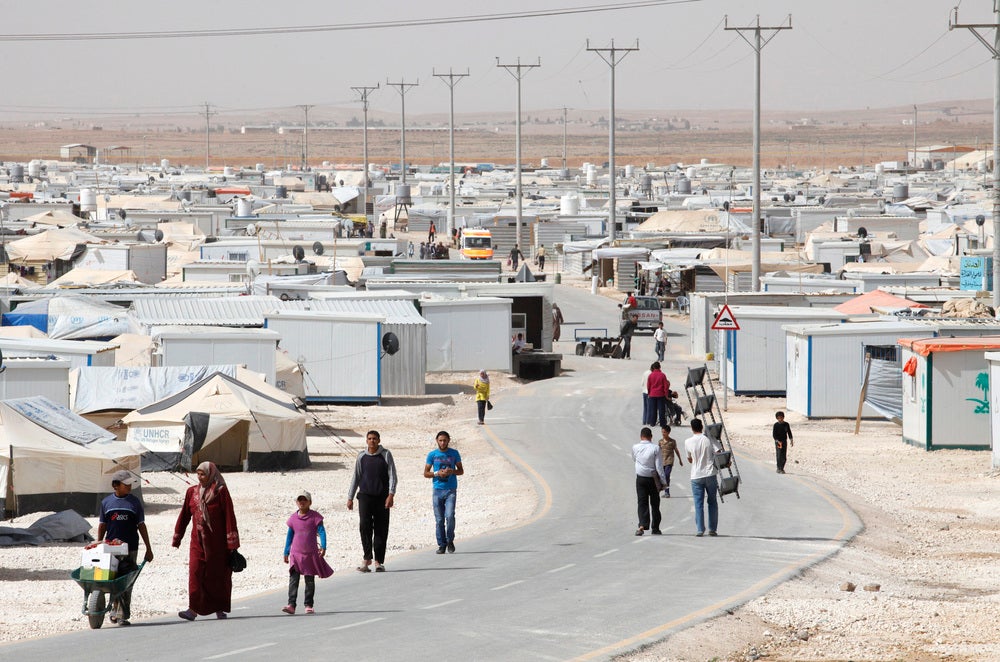UNHCR collects data on the needs and wellbeing of people affected by displacement, which it uses to inform responses and programs. Until recently, none of this data was available outside UNHCR. And for good reason: the protection that UNHCR provides to displaced people has specific legal and ethical dimensions, and these extend to their data. Yet this data could inform the operations, programs, research and policies of many other organizations, including governments, working to improve the lives of people affected by forced displacement.
How, then, could UNHCR reduce the tension between protecting data and realizing its value through secondary use? The UNHCR Microdata Library project, a close collaboration between UNHCR and the World Bank supported by the Joint Data Center (JDC), successfully achieved this by enabling the safe sharing of UNHCR socioeconomic microdata. Since the first dataset was published on the UNHCR Microdata Library in early 2020, a total of 736 have now been made available. Today, people around the world working on forced displacement, planning operations, designing programs, conducting research and formulating policy, can read about and request access to these datasets, and the 92,209 columns of data they contain.
The technical exchange between UNHCR and the World Bank that made this possible spanned software, curation, anonymization, capability and governance (Fig. 1). On software, the World Bank Microdata Library team provided a version of the open-source NADA Data Catalog, fine-tuning it to UNHCR needs. The teams worked together to bridge the gap between humanitarian and development data curation approaches and documentation standards, adopting a metadata schema used by development organizations and governments (the Data Documentation Initiative) to underpin the UNHCR Microdata Library. Given the sensitivity of UNHCR microdata, the teams worked iteratively to tailor risk assessment and anonymization methods, through the use of statistical disclosure control to UNHCR operational contexts, including building capacity to identify future risks, for example, using synthetic data to explore mosaic effect disclosure risks. These bespoke data curation procedures were formalized as UNHCR-internal tools, guidance, and policy documentation, which are complemented by a capacity-building training offer, and which are anchored in UNHCR’s data governance landscape through the UNHCR General Policy on Personal Data Protection and Privacy.
The value of data is in its use, and since the UNHCR Microdata Library first went live three years ago, 168,331 people have visited it, 3,207 people have requested access to one or more of the 736 socioeconomic datasets it now hosts, and at least 71 reports and articles have cited it. The UNHCR Microdata Curation team have successfully lowered barriers to data use by streamlining access management: the median time for license request approval (for those approved) is now just one day. Most license requests to the UNHCR Microdata Library come from universities, with development organizations, including the World Bank, UN agencies, NGOs and think tanks making up the other broad constituencies of data users.
What worked?
The key to success of the UNHCR-World Bank partnership on responsible microdata dissemination was frequent, technical, two-way and collaborative exchange, which was complemented by wider engagement with other organizations. The collaboration was two-way, as there was knowledge gain on both sides. UNHCR gained knowledge and insight into data documentation standards and anonymization and curation practices applied by development organizations. The World Bank gained knowledge on the nuances of privacy protection of highly vulnerable groups of people. The teams also worked together on joint challenges, for example, how to bridge the gap between humanitarian and development data documentation. The JDC played a convening role, catalyzing, consolidating and giving momentum to the partnership.
The use of UNHCR microdata by development organizations is of particular interest given UNHCR’s commitment to long-term socioeconomic solutions to displacement. UNHCR and World Bank teamwork on curation has enhanced the discoverability and accessibility of UNHCR microdata to development organizations. In addition to providing comprehensive information on datasets to users, the metadata schema used by the UNHCR Microdata Library makes it interoperable with other microdata libraries. So, data hosted on the UNHCR Microdata Library is cross-listed on the World Bank Microdata Library. Likewise, data hosted on the FAO and World Bank microdata libraries related to forced displacement is cross-listed on the UNHCR Microdata Library. Going further, the teams have also bridged the data documentation gap between development and humanitarian organizations by cross-listing all data hosted on the UNHCR Microdata Library on the Humanitarian Data Exchange, as well as cross-listing socioeconomic microdata related to forced displacement hosted on the Humanitarian Data Exchange on the UNHCR Microdata Library, as shown in Figure 2.
During the next decade, development organizations will do more work in fragile contexts, so lowering the barriers to data sharing between humanitarian and development organizations is key to facilitating joined-up action. The UNHCR World Bank microdata curation project shows that this can work, demonstrating that humanitarian organizations can process, document and responsibly disseminate data such that development partners and governments can use it intuitively. Only with more of this kind of foundational integration between the humanitarian and development data ecosystems can longer-term development planning be sustainably integrated with crisis response.
What's next?
The responsible dissemination of microdata serves a group of advanced technical users, but the information contained in those datasets, if made accessible to other groups, could provide valuable insight to inform programming and policy more directly. To this end, the JDC is supporting UNHCR to build an indicator platform to complement its population statistics, a process that is enriched by the existing collaboration on data and systems between UNHCR and the World Bank.
To learn more, follow the related links:
UNHCR microdata curation blogs
-
The Microdata Library in 2023: furthering the commitment to the responsible sharing of microdata
-
Responsible and Timely: Sharing Data on UNHCR’s Microdata Library in 2022
Norwegian Center for Humanitarian Studies highlights UNHCR Microdata Library as good practice: Data Sharing between Humanitarian Organisations and Donors
Interagency Standing Committee Guidance on Data Responsibility in Humanitarian Action UNHCR Microdata Library as an example of data responsibility in practice.
World Bank UNHCR Joint Data Center End-of-Activity Briefing Notes









Join the Conversation